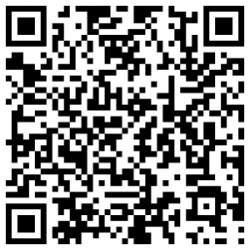QR Codes Explained

Have you noticed them at all? I am seeing those funny square boxes of black pixels all over the place. They are even appearing on TV screens during cookery programmes where, to add insult to injury; the program makers add arrows pointing at them explaining that, this is where you get the recipe from? Doh!
I usually let this sort of thing pass me by as I’m now at that age where if there is something new, I’ve started to rely on the fact that someone will tell me what and how they work… eventually.
Things did come to a head recently when playing an Xbox game with the grandkids when I realised they just played the game, where I was having to stop every two minutes to get them to explain the buttons on the remote. This 50+ age issue is really something to avoid – too late for me though.
Anyway, I mentioned the black pixel box thing to my 9 year old grandson, asking what they were. Big mistake. He gave me the grandson look of shame; as though by asking such a dim question that I’d let the family name down… big style. (I tried to bluff my way out like any responsible adult would, but he saw straight through me… again).
So, these black pixel box thingy’s turned out to be quite interesting.
I started to realise that they were the missing link between technology and the printed word. As my 9 yr old grandson proclaimed, ‘yo, these is just a clever’r bar code init; that ya phone links to’, well something along those lines. Actually, they turn out to be 2D; matrix bar codes that enable the embedding of converging internet services, made accessible by a growing number of diverging internet based mobile devices. I think?
They are known as QR (Quick Response) codes and have been around for a number of years now; mainly used in Japan where they were invented in 1994 to track auto parts. However, with the increasing growth in smart phone ownership in this country, they are taking on a much higher profile. What they can do is quickly and efficiently link a paper based article to a support web page, email address or even a geographical location in Google maps. They are starting to appear in magazines, on the sides of buses and even during cookery TV programmes to allow the reader to quickly access additional information from a smart phone, i.e. the recipe. And they work!
What we can expect to see in the future is an increased use of QR codes through their integration within marketing materials (directing general public to view a page from the on-line prospectus), support leaflets (maps and links to Google maps), signage and directions around the campus, URL or email links within teaching materials; even minutes of meetings! KIS? Well let’s see what happens on that one.
The original one dimensional bar code of was only really used commercially for speeding up stock control and at the shopping trolley. HE currently uses the older bar codes for exam attendance and exam paper marking, in kitchen stock control and within halls of residence (bed linen and the like). The QR code however will cement the tie between anything that is in the physical world to the internet world through hyperlinking. QR codes have the potential to glue the two worlds together; seamlessly via equipment that is already present in the pocket of you and me.
QR readers and generators are readily available for Android smart phones and at the last count, over 50 apps for the iPhone.
The QR code shown above is worth a look! Download an app and give it a go.
Phillip Russell-Lacy - SROC Committee: The University of Sheffield


